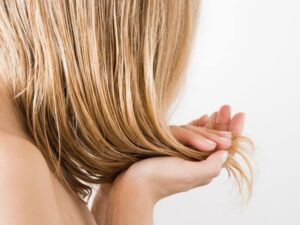Table of Contents
Natural Hair Lightening: Safe, Effective Methods to Brighten Your Locks
With around 50% of women dyeing their hair regularly, often in the quest for a sun-kissed, lighter look, natural hair lightening methods have gained popularity. Unlike conventional dyeing processes that involve harsh chemicals, there are natural ways to achieve lighter shades, often with less damage to your hair.

Natural Hair Lightening: Safe, Effective Methods to Brighten Your Locks
Understanding Hair Color and Pigmentation
Hair color originates from two pigments: eumelanin (for darker shades) and pheomelanin (for red hues). Blonde hair results from lower pigment levels, while gray appears when pigment production decreases with age. Learning about these pigments helps us understand how natural hair lightening works without the need for harmful chemical interventions.
Conventional Hair Lightening: The Risks Involved
Conventional lightening often involves hydrogen peroxide to strip natural pigment. This chemical is powerful yet risky, as it weakens the hair shaft and can cause long-term damage. Other synthetic products often contain formaldehyde and similar chemicals, which may increase health risks like allergic reactions and even cancer.
Health Risks Associated with Chemical-Based Hair Dye
Many commercially available hair dyes contain chemicals linked to various health issues. According to The American Cancer Society, prolonged exposure to hair dye chemicals might be associated with certain cancers. Additionally, people often experience allergic reactions such as scalp itchiness, hair breakage, and skin irritation.
Natural Alternatives to Lighten Hair
If you prefer to avoid chemical dyes, several natural alternatives can provide subtle, sun-kissed highlights without the associated risks. These methods are not only safer but also come with additional health benefits for your hair.
1. Chamomile
Chamomile, known for its soothing properties, is a gentle natural lightener. Brew a strong cup, let it cool, and apply it to your hair. Spend 30 minutes in the sun, then rinse and shampoo. Chamomile not only lightens hair but also adds a natural sheen.
2. Cinnamon and Honey
Both cinnamon and honey contain natural bleaching properties. Combine one tablespoon of cinnamon with two tablespoons of honey, apply the mixture, and leave it on for at least four hours. This combination is safe, effective, and offers a subtle warm lightening effect.
3. Baking Soda
Baking soda is a versatile ingredient often used for teeth whitening, but it also works wonders for hair. Create a paste with 1/3 cup of baking soda and warm water. Apply to your hair and leave for about 15 minutes, then rinse. Baking soda gently removes product buildup, enhancing the hair’s natural color.
4. Lemon Juice
Citrus acids in lemon juice make it a popular natural bleaching agent. Combine one tablespoon of lemon juice with half a gallon of water and apply to hair. Sun exposure enhances the lightening effect. This technique works best for naturally lighter shades.
5. Apple Cider Vinegar
Apple cider vinegar not only adds shine but also provides a mild lightening effect. Mix equal parts of apple cider vinegar and water, apply to hair, and let it sit for 30 minutes. Use this method regularly for best results.
6. Sea Salt
Sea salt combined with sun exposure replicates the natural effects of ocean water on hair. Dissolve one tablespoon of sea salt in 1/2 cup of warm water, apply to hair, and leave for 20 minutes. This method provides beach-inspired highlights.
DIY Recipe: Natural Hair Lightener
For a DIY natural hair lightener, try this recipe:
- ⅓ cup baking soda
- 1 tablespoon sea salt
- 5 drops of chamomile essential oil
- Warm water to create a paste
Mix all ingredients in a small bowl to create a thick paste. Apply to hair, leave for 30 minutes, then rinse thoroughly.
Health and Safety Tips
While these natural methods are generally safe, everyone’s hair reacts differently. To avoid allergic reactions, test on a small section first. Additionally, using purified water can enhance results, while essential oils like chamomile add moisture and shine, which is beneficial for both the scalp and hair strands.
Conclusion
Switching to natural hair lightening methods can reduce exposure to harmful chemicals, offering a safer alternative for those seeking a lighter look. Whether you choose chamomile, honey, baking soda, or sea salt, these natural ingredients provide effective options for gentle hair lightening without the downsides of commercial products.